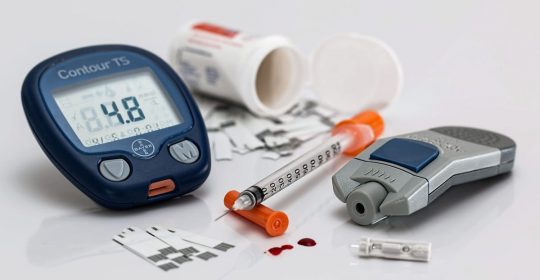DEALING WITH DIABETES
As a diabetic, you are:
• 20 times more likely to develop kidney diseases
• 4 times more prone to become blind
• 4 times more susceptible to get a stroke
• 2-4 times more likely to have a heart attack
Dos and Don’ts of a Diabetic Diet:
Good Food
1. Green leafy vegetables
2. All vegetables except for roots and tubers
3. Tomato juice or lime juice without sugar
4. Sugarless green or black tea (without milk)
5. Vegetable soups (without butter) or skimmed butter milk
6. Salads, sprouts
Food to avoid
1. Jam, sugar, honey, jaggery, glucose
2. Sweets and desserts
3. Corn flour, custard, jelly etc
4. Cakes and pastries
5. Ghee, dalda, vanaspathi, coconut oil, butter
6. Organ meats like brain, liver, kidney, etc
7. Fruits like banana, mango, grapes, dates, jack fruit etc
8. Dry fruits, cooked carrots, sweet potato, tapioca
9. Tender coconut, coconut water
10. Nuts like cashew nuts, almonds, pista
11. Aerated drinks such as Coco cola, Pepsi, etc
Risk factors for diabetes
1. Family History: There is a 50 % chance that a parent with diabetes will have offspring also likely to develop diabetes.
2. Obesity: Excess body weight, especially abdominal obesity, could increase risk of diabetes.
3. Sedentary lifestyle: Physical inactivity and lack of exercise could lead to developing type 2 diabetes.
4. Stress: Physical or mental stress owed to urban living and lifestyle changes also impact type 2 diabetes.
How to check for diabetes
There are three tests that check for diabetes:
1. Fasting plasma glucose test:
After an 8-hour fasting period, a blood sample is drawn to check for blood glucose levels in the body. This is usually done in the morning.
Range Diagnosis
100 mg or below – Normal
100 – 126 mg – Impaired fasting glucose
More than 126 mg – Diabetes Mellitus
2. Glucose Tolerance Test (GTT):
GTT is a blood sample tested for plasma glucose also taken after an 8-hour fasting period. A specified amount of glucose dissolved in water is given to drink, and after a 2-hour break – post breakfast or lunch – a blood sample is again tested for blood glucose levels. At 120 minutes
Range Diagnosis
Less than 140 – Normal
140 – 200 – Impaired glucose tolerance
More than 200 – Diabetes Mellitus
3. Glycosylated Haemoglobin Estimation (HbA1c):
Since glucose cells stick to haemoglobin present in blood cells, and blood cells have an average life cycle of four months before they are replaced, this test gives an average of blood sugar levels over a period of three months. This is a good tool for follow up of diagnosed diabetes patients, but not a good tool to diagnose Diabetes Mellitus.
To control diabetes, try these lifestyle changes:
1. Maintain ideal weight according to your height.
2. Manage your stress by relaxing , exercising or meditating
3. Eat a healthy diet at regular timings, with lots of raw fruits and vegetables
4. Increase physical activity to not less than half an hour everyday, five days a week
5. Stop, or at least limit, consumption of alcohol and cigarettes






